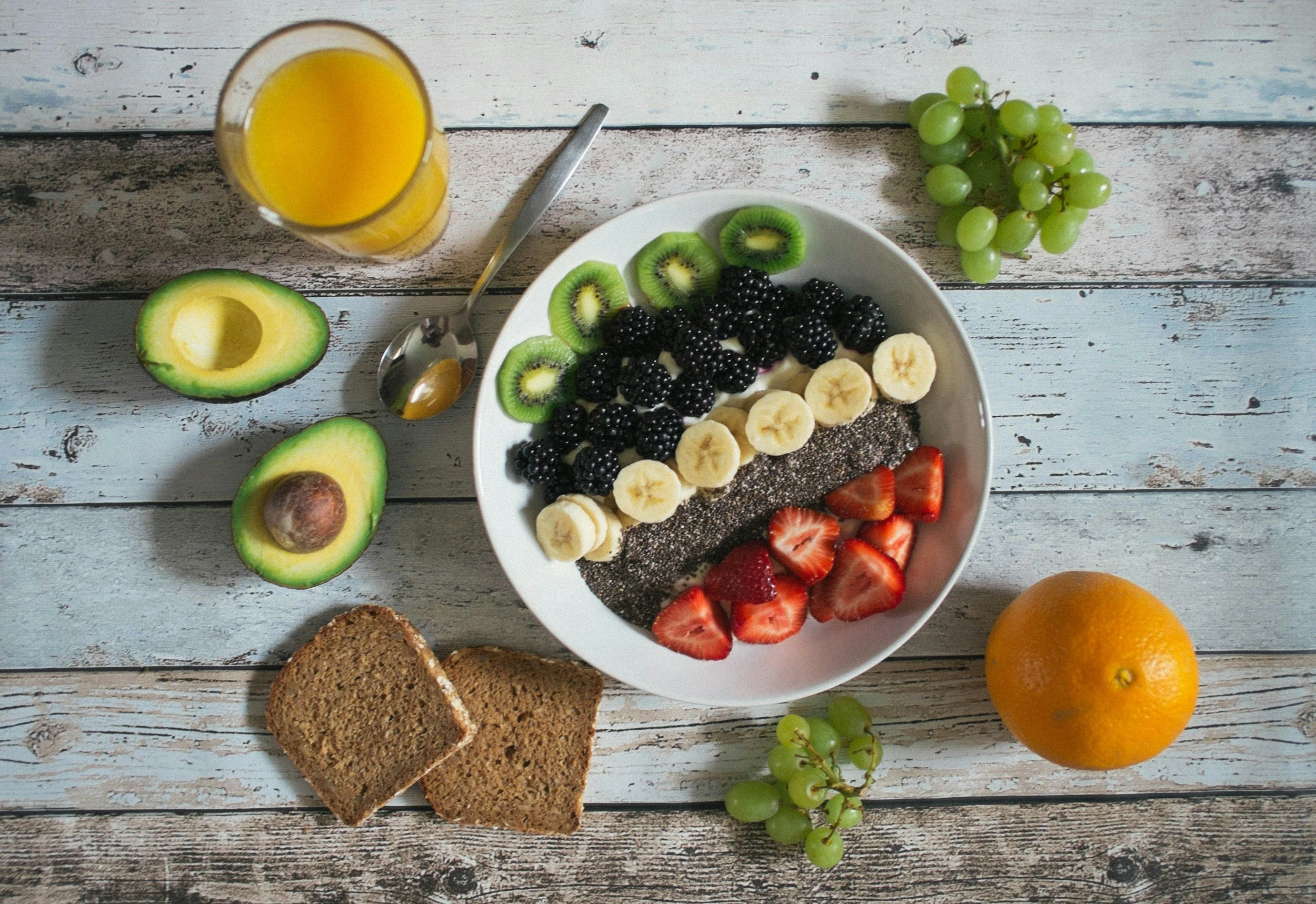Fibre 101: Why dietary fibre is essential for health
As a Registered Dietitian, I often see clients who are surprised by how much of a difference increasing their fibre intake can make. It’s not just about digestion – fibre also supports heart health, helps balance blood sugar levels, and can help in managing a healthy weight.
So, let’s take a look at why fibre matters, where you can get more of it, and when a fibre supplement might be worth adding to your routine.
What is fibre?
Fibre is a type of carbohydrate that comes only from plant foods: fruits, veggies, grains, legumes, nuts, and seeds. It passes through your digestive system mostly intact — helping to keep things moving and supporting regular bowel movements.
Fibre also feeds the good bacteria in your gut, which play a key role in overall health. Plus, fibre has some pretty impressive metabolic benefits: it helps slow the release of sugar into your bloodstream and supports the removal of cholesterol from your body.
Why fibre matters
Fibre often doesn’t get the spotlight it deserves in conversations about healthy eating – but it’s one of the most important components of a balanced diet.
In New Zealand, most of us aren't getting enough fibre each day, and that shortfall could be affecting everything from our bowel habits to our long-term risk of chronic disease.
Types of fibre in food
There are two main types of fibre:
Soluble fibre dissolves in water and forms a gel-like texture in your gut. It’s great for helping lower cholesterol and keeping blood sugar levels steady.
Insoluble fibre doesn’t dissolve — instead, it adds bulk to your stool and helps keep things moving, which can prevent constipation.
Most whole foods (think veggies, fruits, legumes, and wholegrains) contain a mix of both types. There's also resistant starch, a special kind of fibre found in foods like green bananas and cooked-and-cooled rice, pasta, potatoes, and kumara. It acts similar to soluble fibre and feeds the good bacteria in your gut.
How much fibre do we need?
According to the New Zealand Nutrient Reference Values (NRVs), adults should aim for at least: (1)
25g of fibre per day for women
30g per day for men
But most of us aren’t getting enough. The last comprehensive look we had — the 2008/09 Adult Nutrition Survey — found the average Kiwi was only eating around 20g of fibre a day, which falls well short of the mark (2). While that data’s a bit dated, it’s still the best national insight we’ve got into how much fibre New Zealanders are actually getting.
5 health benefits of fibre
A high-fibre diet does more than just keep you regular — it’s also linked to a lower risk of several serious health issues. Here are five research-backed benefits of getting enough fibre each day:
Heart disease – Soluble fibre can help lower “bad” LDL cholesterol levels, supporting heart health.
Type 2 diabetes – Fibre slows down digestion, which helps reduce blood sugar spikes after meals.
Bowel cancer – One of the most common cancers in New Zealand. Fibre supports a healthy gut microbiome and regular bowel movements — both key in reducing your risk.
Diverticular disease & constipation – Fibre helps keep things moving through your digestive system, making it easier to prevent or manage these common gut issues.
Weight management – Fibre-rich foods are more filling, which can help curb overeating and support weight loss goals.
A 2019 systematic review published in The Lancet found that people who ate high-fibre diets had a 15–30% lower risk of dying from any cause — including heart disease (3).
How do we get fibre in food?
For most people, the best (and easiest) way to boost fibre intake is through whole foods. Here are some of the top sources:
Fruits and vegetables – Aim for 7+ servings a day. Keep the skin on where you can, snack on fresh fruit, and try to fill at least half your plate with veggies at lunch and dinner.
Legumes – Lentils, chickpeas, and beans are fibre powerhouses. Add them to soups, salads, and curries for an easy fibre boost.
Wholegrains – Think oats, wholemeal bread, grainy crackers, quinoa, brown rice, and cereals made from wholegrains.
Nuts and seeds – A great source of fibre, healthy fats, and protein. Snack on a small handful of unsalted mixed nuts, or sprinkle seeds like pumpkin or chia over salads, yoghurt, and porridge.
If you're making changes to your diet, increase fibre gradually and drink plenty of water — around 1.5 to 2 litres a day. This helps your digestive system adjust and keeps everything moving smoothly.
Is it a good idea to take fibre supplements?
Fibre plays a big role in long-term health — from keeping your digestion on track to balancing blood sugar and reducing the risk of chronic disease.
For most people, the first step is getting more fibre from whole foods. But if you need a little extra support, a high-quality supplement (such as psyllium husk) can be a simple, effective addition to your routine. There are many flavoured fibre supplements which can be more palatable and easier to incorporate into your daily routine, an example being No 2 Good Gut Fibre.
Not sure if you’re getting enough? The nutrition audit might be the service you need! Find out more here.
References
(1) National Health and Medical Research Council (Australia), New Zealand Ministry of Health. Nutrient Reference Values for Australia and New Zealand. Canberra (AU): National Health and Medical Research Council; 2006.
(2) Ministry of Health. Adult Nutrition Survey 2008/09. Wellington (NZ): Ministry of Health; 2011.
(3) Mann J, Cummings J, et al. Carbohydrate quality and human health: a series of systematic reviews and meta-analyses. Lancet. 2019;393(10170):434–445.



